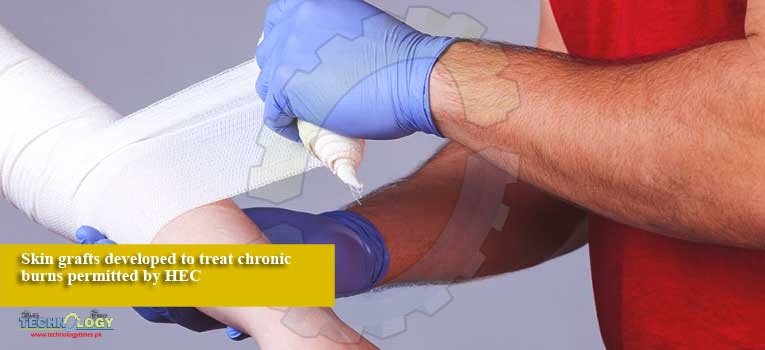Higher Education Commission (HEC) permitted the Pro-angiogenic Skin Grafts project under the Technology Development Fund (TDF). Skin grafts have been developed for the treatment of burns and non-healing ulcer wounds.

Dr. Muhammad Yar, Associate Professor, COMSATS University, Lahore was awarded the project named ‘Converting Inexpensive Indigenous Chitosan to High Value Commercial Pro-angiogenic Tissue Engineered Skin Grafts for Burn Patients’.
Pro-angiogenic Tissue Engineered Skin Grafts was aimed at formulating fast, safe and low priced products to immediately stop blood by procuring chalish scale-up of chitosan and its water soluble derivatives, conducting chemical and biological re-evaluation of those products and then converting prototypes to commercially valuable outcome.
Synthetic Pro-angiogenic skin graft is cost effective and safe and is positioned over an area of the body where the skin is lost due to skin infections, deep burns, open and large wounds, ulcers that haven’t healed properly or skin surgery.
The patron will heal within one to two weeks, but the graft site will take a bit longer to heal. For at least three to four weeks after the surgery, you’ll need to avoid doing any activities that could stretch or injure the graft site.
It is predictable that the synthetic pro-angiogenic skin grafts will become very effective for the treatment of burn, and Diabetic Foot Ulcer (DFU) patients in Pakistan and all across the world.